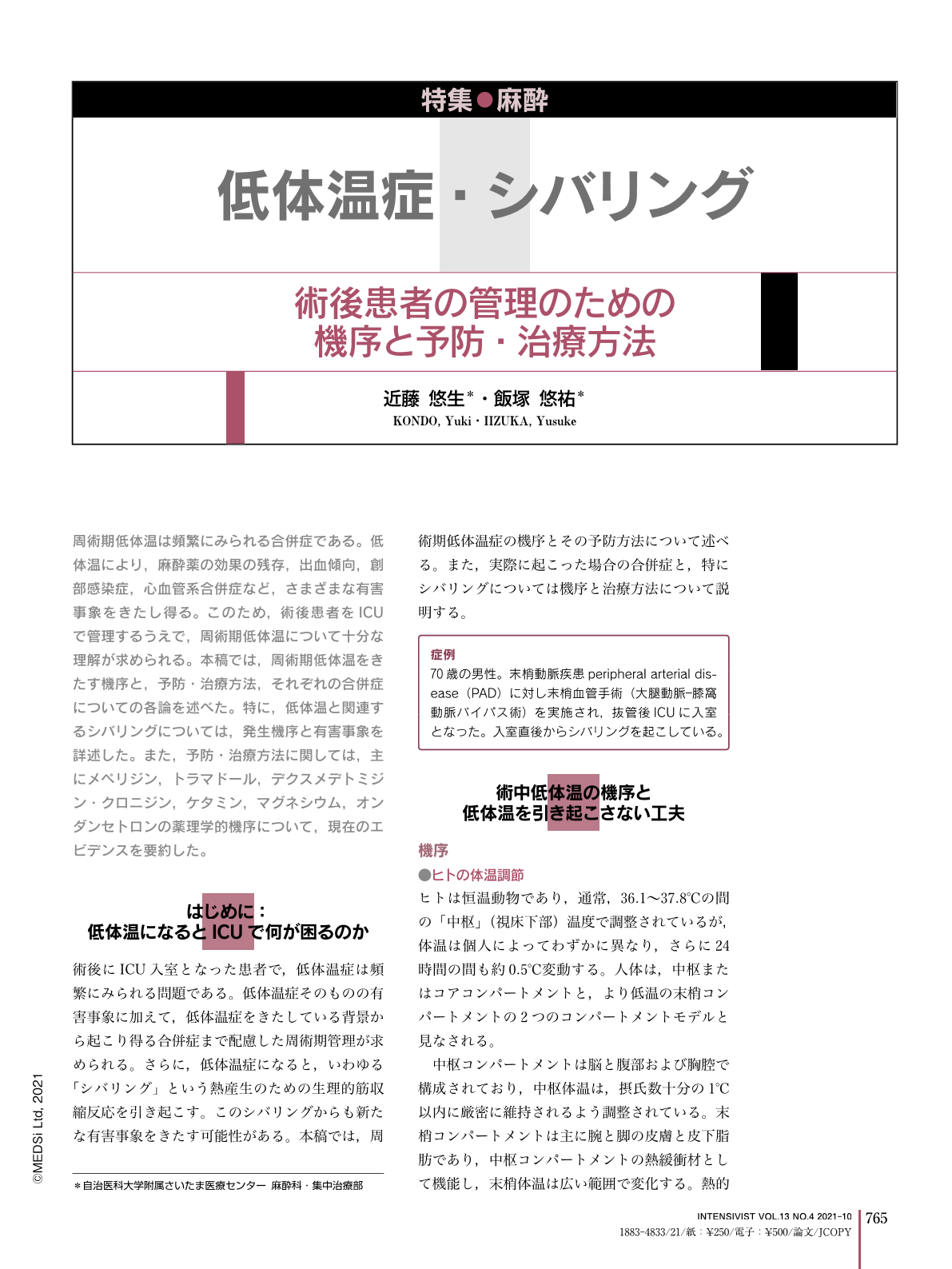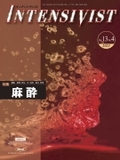Japanese
English
- 有料閲覧
- Abstract 文献概要
- 1ページ目 Look Inside
- 参考文献 Reference
- サイト内被引用 Cited by
周術期低体温は頻繁にみられる合併症である。低体温により,麻酔薬の効果の残存,出血傾向,創部感染症,心血管系合併症など,さまざまな有害事象をきたし得る。このため,術後患者をICUで管理するうえで,周術期低体温について十分な理解が求められる。本稿では,周術期低体温をきたす機序と,予防・治療方法,それぞれの合併症についての各論を述べた。特に,低体温と関連するシバリングについては,発生機序と有害事象を詳述した。また,予防・治療方法に関しては,主にメペリジン,トラマドール,デクスメデトミジン・クロニジン,ケタミン,マグネシウム,オンダンセトロンの薬理学的機序について,現在のエビデンスを要約した。
Perioperative hypothermia is a frequently observed complication in the surgical ICU. Intensivists must know how to manage patients with postoperative hypothermia. Intraoperative hypothermia results from a combination of impaired thermoregulation due to anesthesia, exposure to the environmental temperature of the operating room, open exposure of a body cavity during certain operations, hypothermia management during cardiac surgery, etc. Perioperative hypothermia can lead to various adverse events such as prolongation of anesthesia effects, coagulation disorders and platelet hypofunction, surgical site infections, perioperative myocardial ischemia, shivering, thermal discomfort, etc. In this article, we explain the mechanism of perioperative hypothermia and discuss methods of prevention and treatment. We present various theories about these complications, and discuss shivering in detail. We describe currently known mechanisms and adverse events due to shivering. There is a paucity of evidence for the prevention and treatment of shivering. We summarize current evidence regarding the pharmacological mechanisms for meperidine, tramadol, dexmedetomidine/ clonidine, ketamine, magnesium, and ondansetron.

Copyright © 2021, MEDICAL SCIENCES INTERNATIONAL, LTD. All rights reserved.


